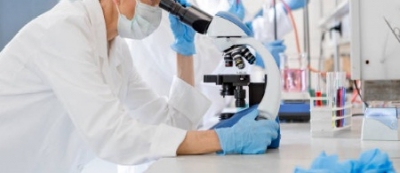
London, May 14 (IANS) Researchers have used a common disinfectant and antiseptic to create a new antimicrobial coating material that effectively kills bacteria and viruses, including MRSA and Covid-19.
Scientists at the University of Nottingham’s School of Pharmacy took chlorhexidine, often used by dentists to treat mouth infections and for pre-surgical cleaning, and used it to coat the polymer, acrylonitrile butadiene styrene (ABS).
The new study, published in the journal Nano Select, shows that this new material was found to be effective in killing the microbes responsible for a range of infections and illnesses and could be used as an effective antimicrobial coating on a range of plastic products.
Plastics are widely used in medical settings, from intravenous bags and implantable devices to hospital beds and toilet seats.
Some microbial species can survive in a hospital setting despite enhanced cleaning regimes, leading to an increased risk of patients getting infections whilst in hospital which then need antibiotic treatment.
These microorganisms can survive and remain infectious on abiotic surfaces, including plastic surfaces, for extended periods, sometimes up to several months.
“As plastic is such a widely used material that we know can harbour infectious microorganisms we wanted to investigate a way to use this material to destroy the bacteria. We achieved this by bonding a disinfectant with the polymer to create a new coating material and discovered not only does it act very quickly, killing bacteria within 30 minutes, it also doesn’t spread into the environment or leach from the surface when touched,” said Dr Felicity de Cogan, Assistant Professor in Pharmaceutical Science of Biological Medicines.
“Making plastic items using this material could really help tackle the issue of antibiotic resistance and reduce hospital acquired infections,” de Cogan added.
The researchers used a special imaging technique called Time-of-Flight Secondary Ion Mass Spectrometry (TOF-SIMS) to examine the material at molecular level. This revealed the material was antimicrobial and rapidly killed microbes and after 45 minutes the surfaces were still clear of these microbes.
It was also effective against SARS-COV-2, with no viable virions found after 30 minutes. Additionally, the surfaces were also effective in killing chlorhexidine-resistant strains of bacteria.
The Covid pandemic has drawn increased attention to hospital-acquired infections, as it has been estimated that 20 per cent of all patients hospitalised with Covid contracted the virus while already in hospital.
The most common pathogens that cause hospital-acquired infections are Escherichia coli, Staphylococcus aureus, and Clostridium difficile. Outbreaks of infection in the clinic are frequently caused by strains resistant to antimicrobial drugs.
–IANS
rvt/pgh










